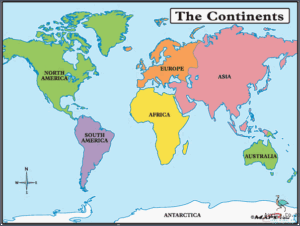
The South African government has three capital cities in which different branches of government are located. The three capital cities are Pretoria, the executive capital; Cape Town, the legislative capital; and Bloemfontein, the judicial capital.
The three-capital system was established by the Constitution of 1994 in order to distribute government power more evenly across the country. Prior to 1994, the capital city was Pretoria, which was located in the then-Transvaal Province (now Gauteng Province). The apartheid government was based in Pretoria, and the majority of the country’s population was located in the surrounding area.
The three-capital system was designed to spread government power and functions more evenly across racial groups and geographical areas. It is also intended to make government more accessible to the people. The three capital cities are all located in different provinces, and each city has its own distinct character.
Pretoria is the administrative capital, and is home to the offices of the President, the Cabinet, and various government departments. Pretoria is located in Gauteng Province, which is the most populous province in the country.
Cape Town is the legislative capital, and is home to the National Assembly
Contents
- 1 Why Does South Africa Have Three Capitals
- 2 Historical Context: Discussing the history of South Africa’s capitols and their respective roles
- 3 Current Role of Each Capital: Explaining the current role of each capital, Pretoria, Cape Town, and Bloemfontein
- 4 Political Influence: Examining the political influence of each capital
- 5 Conclusion
Why Does South Africa Have Three Capitals
South Africa has three capitals due to its complex history. The country is divided into nine provinces, each with its own capital. However, three of the provinces are considered to be of national importance: Pretoria, Cape Town, and Bloemfontein. Each of these cities has its own unique history and culture, and each has played an important role in the nation’s history. Pretoria is the administrative capital, Cape Town is the legislative capital, and Bloemfontein is the judicial capital. This arrangement allows South Africa to have different capitals that represent the different aspects of its history, culture, and government. It also helps to ensure that all provinces are represented at a national level.
Historical Context: Discussing the history of South Africa’s capitols and their respective roles
South Africa has a rich and complex history of capital cities. From the earliest days of the Dutch and British settlements to the modern Republic, the country has had three capitals to serve different roles and purposes. Each of these capitals has played an important role in the development of South Africa and its people, and all continue to influence the nation to this day.
The first of South Africa’s capitals was Cape Town, established by the Dutch in 1652. The settlement was chosen as the capital of the Dutch colony of the Cape of Good Hope, and it quickly became a bustling port city that served as a gateway to the East. The city was also the seat of government, and it was here that the first South African Parliament convened in 1854.
The second capital city was Pretoria, established in 1855 by the British. Pretoria was chosen as the administrative capital of the British colony of the Transvaal, and it quickly grew to become the largest city in the region. The city was the centre of government, with the first Prime Minister, Louis Botha, taking office in 1908. It served as the seat of government until 1960, when the country gained independence.
The third and final capital of South Africa is Johannesburg, which was founded in 1886. Johannesburg was the economic capital of the country, and it quickly grew to become the largest and most prosperous city in the region. It was here that the gold and diamond industries were established and flourished, and it remains the economic centre of the country to this day.
The three capitals of South Africa have played an important role in the development of the nation. Cape Town served as the gateway to the East, and it was the seat of government for the Dutch and British colonies. Pretoria was the administrative capital for the British colony of the Transvaal, and it served as the seat of government until the country gained independence. Finally, Johannesburg was the economic capital of South Africa, and it continues to be the centre of the nation’s economy. Each of these cities has a unique and important history, and they continue to shape the nation to this day.
Current Role of Each Capital: Explaining the current role of each capital, Pretoria, Cape Town, and Bloemfontein
South Africa is unique in having three capitals – Pretoria, Cape Town, and Bloemfontein. This arrangement has been in place since 1910, when the Union of South Africa was formed, and it has been the source of much debate and speculation over the years. So, why does South Africa have three capitals?
The answer lies in the history of the country. South Africa has a long and complicated history, and the different capitals reflect the different political and cultural influences that have shaped the nation. For example, Pretoria was originally established as the capital of the Transvaal Republic, a Boer Republic that existed prior to the Union of South Africa. The Boer Republics wanted to maintain their autonomy, which is why Pretoria was chosen as the capital of the Transvaal Republic.

Cape Town, meanwhile, was chosen as the capital of the Cape Colony, which was a British colony in South Africa. The British wanted to assert their authority over the region and make sure that the Cape Colony was firmly under their control. As such, they chose Cape Town as the capital of the Cape Colony.
Finally, Bloemfontein was chosen as the judicial capital of South Africa. This was done to ensure that the country had an independent judicial system, which was necessary to maintain the rule of law throughout the country. This is why Bloemfontein is sometimes referred to as the ‘judicial capital’ of South Africa.
Today, each of these three capitals has a distinct role in South African politics and culture. Pretoria is the administrative capital of South Africa and it is home to the President, the Cabinet and other important government offices. Cape Town, meanwhile, is the legislative capital of the country and it is home to the Parliament of South Africa. Finally, Bloemfontein is the judicial capital of South Africa and it is the home of the Supreme Court of Appeal.
In summary, South Africa has three capitals because of its long and complicated history. Each capital has a distinct role in South African politics and culture, and together they have helped to shape the nation into what it is today.
Political Influence: Examining the political influence of each capital
The unique political landscape of South Africa has been shaped by numerous factors, including its history and geography. One of the most intriguing aspects of South African politics is the fact that the nation has three capitals – Pretoria, Cape Town, and Bloemfontein. This is a rather unusual arrangement, so why does South Africa have three capitals?
In short, the answer lies in the country’s history and its intricate political divisions. South Africa has a long and complicated history of colonization, apartheid, and civil unrest. As a result, the country is divided into distinct regions and political entities. This division of power has resulted in the creation of multiple capitals, each representing a different part of the nation.
The first of South Africa’s three capitals is Pretoria, which is the administrative capital. This is where the government’s executive branch is located, and it is also the seat of the President. Pretoria is the most populous city in the nation and is located in the Gauteng province. It is the home of numerous government departments, such as the Department of Home Affairs, as well as the South African Revenue Service.
The second capital is Cape Town, which is the legislative capital. This is where the Parliament of South Africa is located, and it is also the home of the South African Constitutional Court. Cape Town is located in the Western Cape province, and it is the second most populous city in the nation.
The third and final capital is Bloemfontein, which is the judicial capital. This is where the Supreme Court of South Africa and the Constitutional Court are located. Bloemfontein is located in the Free State province and is the third most populous city in the nation.
The unique arrangement of the three capitals is reflective of South Africa’s political divisions. Each capital city has a distinct role in the nation’s government, and this arrangement enables the nation to better manage its complex divisions. By having three distinct capitals, South Africa is able to ensure that each region has an equal say in the nation’s politics and is able to maintain a balance of power across the board.
The political influence of each capital is also reflected in the number of government departments and organizations that are located there. Pretoria has the most, with the majority of the nation’s executive and administrative bodies based there. Cape Town is home to the Parliament and the Constitutional Court, while Bloemfontein is home to the Supreme Court and other judicial bodies.
In conclusion, South Africa has three capitals for a variety of political and historical reasons. Each capital city has a distinct role in the nation’s government, and this arrangement enables the nation to better manage its complex divisions. The political influence of each capital is also evident in the number of government departments and organizations that are located there.
Conclusion
The answer to this question is complex and could provide many different reasons. However, one of the main reasons for the country’s three capital cities is that the location of the country’s most important economic and political centres has changed over time.
The first capital was originally located in the southern coastal city of Cape Town, which served as the country’s main port and trade centre. However, with the increasing importance of Johannesburg and Pretoria as centres of industry and commerce, it became necessary to move the capital to those cities.
This pattern of moving the capital as needed has continued over the years, with Pretoria becoming the country’s administrative and economic centre in 1994 and Johannesburg becoming the capital in 1998. Although the original Cape Town remains the capital of the Western Cape province, it has largely lost its prominence in the country’s politics and economy.




